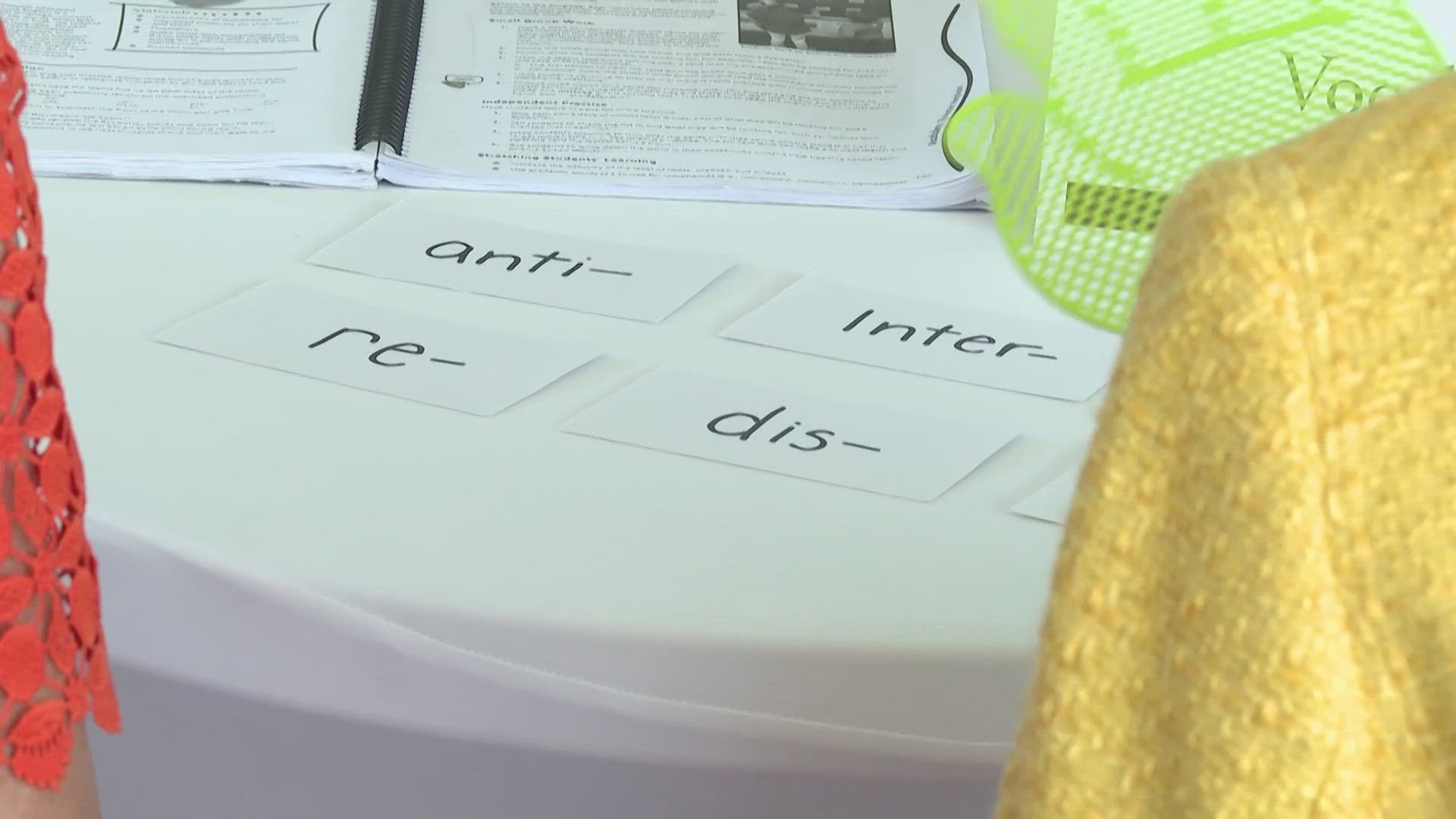NORTH CANTON, Ohio — At the start of another school year, Governor Mike DeWine says Ohio students are still not where they need to be in reading proficiency, but "the science of reading" teaching method that teachers will soon be required to adopt is making a difference.
“What [teachers] universally tell us is, ‘wow, we’re seeing much better results,” DeWine said.
On Thursday, DeWine met with education students, teachers and leaders at Walsh University in North Canton, where education majors have been learning how to teach using the science of reading for years.
It’s a different approach to how many schools currently teach kids to read. This method begins with learning the individual sounds of each letter of a word.
“It’s so important to teach those base skills first and then build on those instead of trying to teach it backwards, like, teach them the whole word and try to break that word apart later on when they’re struggling with something,” said Kate Harlan, a junior at Walsh preparing to become a teacher.
“It’s really about how your brain learns how to read. It’s not another thing,” Perry Schools principal Stacey Daugherty said.
Daugherty said they were initially unsure about the method when they introduced it in her elementary school nearly five years ago.
“It’s a lot. It’s heavy. But it’s worth it in the end and so when we brought that to our students we started to see growth. Big gains and growth,” she said.
And the growth came quicker than they expected. Before the science of reading they might have a handful of kindergartners reading by January. After adopting the teaching method, half of their students were reading by January of their kindergarten year.
“By the time they got into third grade we were just astounded,” she said.
According to the Ohio Department of Education, about 40% of third graders are not proficient in reading. In the 2022-2023 school year, 39.1% of students in all grades scored below proficient in the English Language Arts exam. That percentage was much greater among students who are Black (64.8%) and Hispanic (54.2%).
“I’m going to put more value on the everyday growth of our students than a one snapshot test of our students,” Daugherty said.
Soon more schools across the state are expected to follow in Perry Schools' footsteps. Ohio House Bill 33 requires teachers to complete a science of reading course by the end of this school year in June 2025.
“We know it’s going to make a huge, huge difference,” DeWine said. “That’s why it’s so important that every college in the state that produces teachers be quickly aligned to the science of reading.”
DeWine said they are surveying the state to see where schools are in adopting the science of reading.

